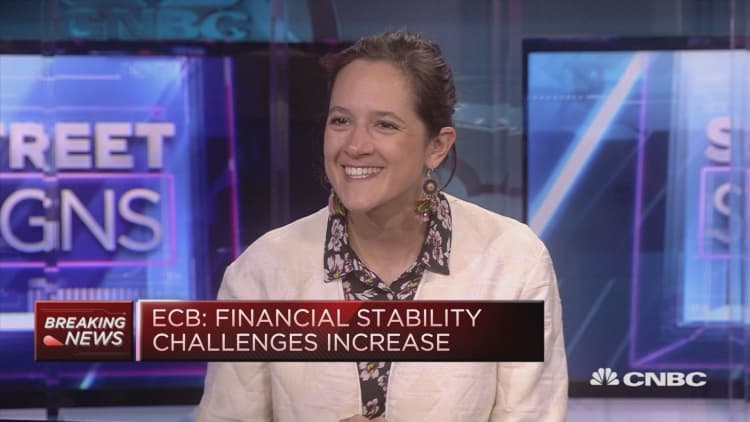The European Central Bank (ECB) announced its easy-money exit strategy one year ago. But twelve months on, the world couldn't look more different.
The trade dispute between the U.S. and China risks derailing economic activity, the Federal Reserve will most likely cut rates this year instead of hiking them further, and inflation hasn't picked up at all.
So what's next for the euro zone's central?
Its Governing Council meeting this week in Vilnius, Lithuania, might not be a game-changer that goes down in history books, but it will shed more light on the details of its new lending scheme for banks — which was brought in after it had to make a U-turn on policy earlier this year.
One focus will be what the new cheap loan program for banks, the TLTROs (targeted longer-term refinancing operations), will look like. In April, President Mario Draghi said that the ECB will look at how monetary policy is working and how the economic outlook has shaped up when setting the terms for the loans. Essentially, these loans should make the euro zone's banks lend more to the real economy. They have a negative deposit rate so they would pay lenders for taking the cash, meaning it's a strong incentive for the banks to use them.
"The conceivable range for the spread (for the negative rate) is between 0 (basis points) and -40 (basis points)," said Dirk Schumacher, an ECB watcher with Natixis, in a research note.
"A small spread would imply that the new TLTROs are predominantly meant to provide a backstop for banks that may have difficulties to refinance themselves in the market. A high spread would signal that the ECB sees a need to stimulate bank lending."
Another potential instrument the ECB could detail is a "tiered deposit rate." This is a tool to mitigate part of the negative effects on a bank's profitability when interest rates are below zero — which they currently are.

Essentially, it would mean that not all of a bank's deposits would have to pay the negative rate — and that's why it's called tiering. Draghi said during his last press conference said it was under formal consideration, but ECB board member Benoît Cœuré has since raised his objections.
Meanwhile, some more clarity on what the ECB expects in terms of inflation and its growth outlook will come in the form of an update of their staff projections.
"Core HICP (harmonized index of consumer prices) inflation forecasts look too optimistic," said Mark Wall, the chief economist at Deutsche Bank, in a research note.
"We expect the 2019 and 2020 forecasts to be revised lower by at least 0.1 (percentage point)," he added.
And of course, there's also the departure day for Draghi which may be discussed at Thursday's press conference this week. Who will succeed the Italian economist is not clear at all. It's expected that a summit in June will decide on all the high-level vacancies in Brussels. And at the central bank there are at two French names, François Villeroy de Galhau and Benoit Cœuré, two Fins, Erkki Liikanen and Olli Rehn and Germany's Jens Weidmann who are in the running.



